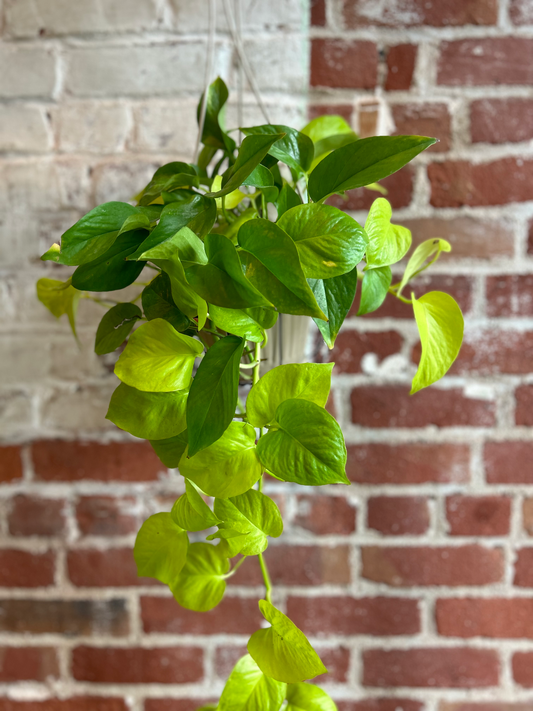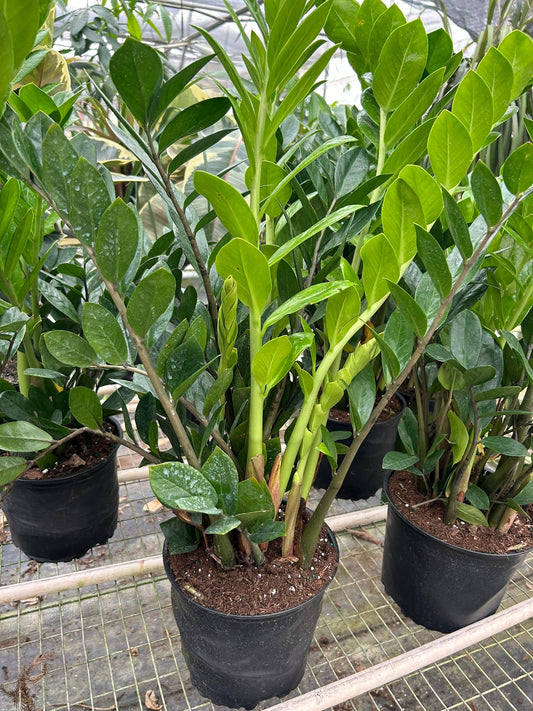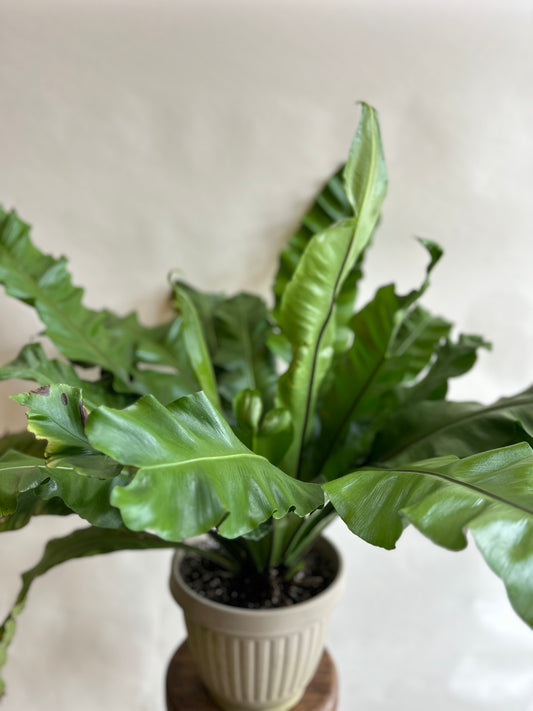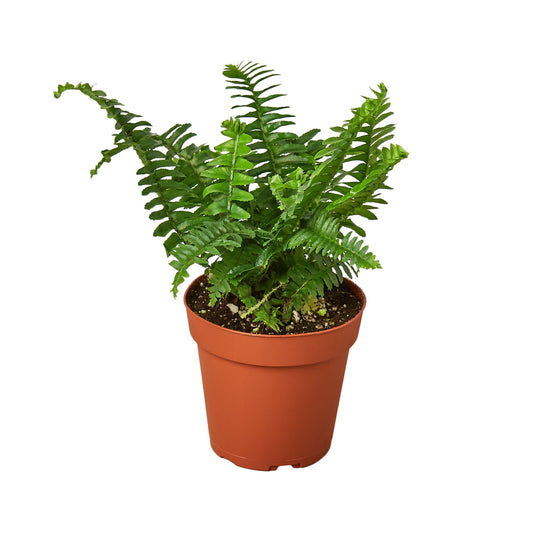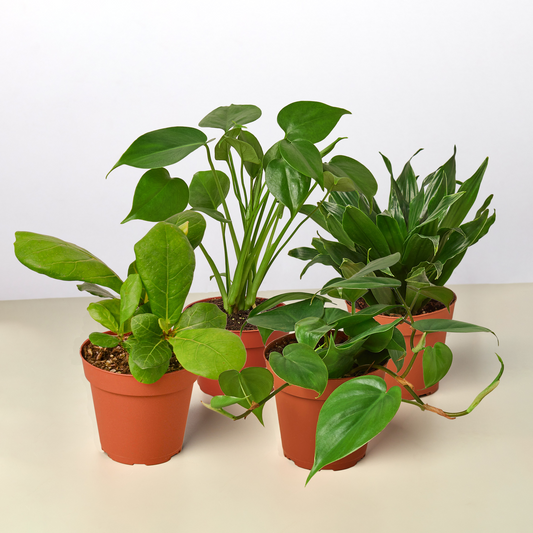Are Velvet Plants Toxic to Cats?
Cafe Planta Team
Ah, the velvet plant! With its stunning deep purple leaves that seem almost too beautiful to be real, it's no wonder this plant is a popular choice among plant lovers. But if you're a cat owner, you might be wondering, "Is this plant safe for my feline friend?" Let's dive into the world of velvet plants and find out.
This blog will guide you through the ins and outs of velvet plants, their toxicity to cats, and how to create a safe and lush environment for both your plants and pets. From plant care tips to alternative pet-friendly plants, we've got you covered.
What Exactly Is a Velvet Plant?
Before we get into the nitty-gritty of cat safety, let's chat about what makes a velvet plant so special. Scientifically known as Gynura aurantiaca, the velvet plant is adored for its vibrant, velvety leaves. The purple fuzz covering the leaves gives it a unique texture that almost begs you to reach out and touch it. These plants are native to Southeast Asia, and they've made their way into homes around the world because of their striking appearance.
Velvet plants thrive indoors, making them a popular choice for adding a splash of color to your living space. They're relatively easy to care for, needing just the right balance of light and water—a perfect match for those who might not have the greenest thumb but want to enjoy a bit of indoor greenery.
So, if you're thinking about bringing one of these beauties into your home, you're in for a treat. But, just like any other plant, there are a few things you need to know to keep it happy and healthy.
Are Velvet Plants Toxic to Cats?
Let's get to the heart of the matter: are velvet plants toxic to cats? The short answer is yes, they can be. While the plant isn't considered highly toxic, it can cause irritation if ingested by your furry friend. The fuzzy leaves, while charming, can irritate a cat's mouth and digestive tract if chewed or swallowed.
Symptoms of ingestion might include drooling, vomiting, or diarrhea. If your cat has a habit of nibbling on your houseplants, it's important to keep a close eye on them around velvet plants. While the effects are generally mild, it's always better to err on the side of caution when it comes to your pet's health.
In case you notice any signs of distress in your cat after they've come into contact with a velvet plant, it's best to contact your vet for advice. They can guide you on the best steps to take to ensure your pet's wellbeing.
Pet-Friendly Alternatives to Velvet Plants
If you've decided that the risk of having a velvet plant around your cat isn't worth it, fear not! There are plenty of pet-friendly alternatives that can bring just as much beauty to your home. Here are a few options:
- Spider Plant: Known for its air-purifying qualities, the spider plant is non-toxic to cats and dogs. Plus, its arching leaves can add a dynamic element to any room.
- Bamboo Palm: This plant is not only pet-safe but also fantastic for improving indoor air quality. Its lush green fronds are perfect for creating a tropical vibe.
- Boston Fern: With its feathery fronds, the Boston fern is a classic choice for a pet-friendly plant that adds elegance to your space.
- Areca Palm: Another palm variety, the Areca is safe for pets and adds a touch of the exotic to your home with its graceful, arching leaves.
These alternatives can provide the same leafy goodness without the worry of harming your pets. Choose the one that best fits your style and home environment!
Tips for Keeping Velvet Plants Out of Reach
If you're set on having a velvet plant but worried about your cat's curiosity, there are ways to keep your plant and your pet safe. Here are some strategies:
- High Places: Place your velvet plant on a high shelf or hanging planter where your cat can't easily reach it.
- Deterrents: Use natural deterrents like citrus peels or vinegar around the base of the plant. Cats tend to dislike these scents and may steer clear.
- Training: Train your cat to stay away from your plants using positive reinforcement techniques. Reward them when they avoid your indoor greenery.
- Distractions: Provide alternative activities or toys to keep your cat entertained and less interested in your plants.
With these tips, you can enjoy the beauty of a velvet plant without constantly worrying about your feline friend's safety.
Basic Care for Velvet Plants
Now that we've covered the safety aspect, let's talk about how to care for your velvet plant. These plants are relatively low-maintenance, but they do have some specific needs:
- Light: Velvet plants love bright, indirect light. A spot near a window with filtered sunlight is ideal. Too much direct sun can scorch the leaves, while too little light can dull their vibrant color.
- Water: Keep the soil consistently moist, but not soggy. Overwatering can lead to root rot, so ensure your pot has good drainage. Water when the top inch of soil feels dry to the touch.
- Humidity: These plants thrive in humid environments. If your home is dry, consider misting the leaves or placing a humidifier nearby.
- Temperature: Velvet plants prefer temperatures between 60-75°F (15-24°C). Avoid placing them in drafty areas or near heating vents.
With the right care, your velvet plant will thrive and continue to add a pop of color to your home.
Designing a Pet-Friendly Plant Space
Creating a home that's both pet-friendly and filled with greenery might seem challenging, but it's definitely doable. Here are some design tips to make it work:
- Use Shelving: Incorporate shelves into your space to display plants out of your pet's reach. This way, you can enjoy your plants without worry.
- Hanging Planters: Utilize hanging planters to add greenery without taking up floor space. It's also a great way to keep plants away from curious pets.
- Barrier Plants: Use larger, pet-safe plants as barriers to protect more sensitive species. This creates a layered look while keeping your velvet plant safe.
- Plant Stands: Elevate your plants using stands to add height and interest to your plant displays while keeping them out of reach.
These strategies can help you create a home that's both beautiful and safe for your pets.
Educating Yourself on Plant and Pet Safety
Keeping your home a safe haven for both plants and pets involves a bit of research and understanding. Here are some tips for staying informed:
- Research: Before bringing a new plant home, research its toxicity levels and care requirements to ensure it's a good fit for your pet-friendly home.
- Consult Experts: Talk to local plant shops or veterinarians for advice on pet-safe plants and any potential risks associated with your existing plants.
- Stay Updated: As new plant varieties become popular, make sure to stay updated on their safety and care guidelines.
- Join Communities: Connect with other plant and pet owners through online forums or social media to share experiences and advice.
By staying informed, you can create a harmonious environment for both your plants and your pets.
Handling Plant Emergencies with Cats
Despite your best efforts, there might be times when your cat gets a little too close to your plants. Here's what to do in case of a plant-related emergency:
- Identify the Plant: Make sure you know the plant your cat has ingested. This information will be crucial for your vet.
- Monitor Symptoms: Keep an eye on your cat for any symptoms of distress, such as vomiting, excessive drooling, or changes in behavior.
- Contact Your Vet: If your cat shows any signs of illness, contact your vet immediately for guidance on the best course of action.
- First Aid: While waiting for professional advice, encourage your cat to drink water to help flush out any toxins.
Knowing how to handle plant emergencies can give you peace of mind as a pet owner.
Final Thoughts
In summary, velvet plants can be a delightful addition to your home, but it's important to be mindful of their potential toxicity to cats. By taking preventive measures and considering pet-friendly alternatives, you can enjoy the beauty of houseplants without compromising your cat's safety.
At Cafe Planta, we're passionate about helping you find the perfect plants for your home. Whether you're an experienced plant parent or just starting out, we're here to assist. If you have questions or need advice, feel free to email us or reach out through our Instagram. Let's cultivate a beautiful, thriving space together!


